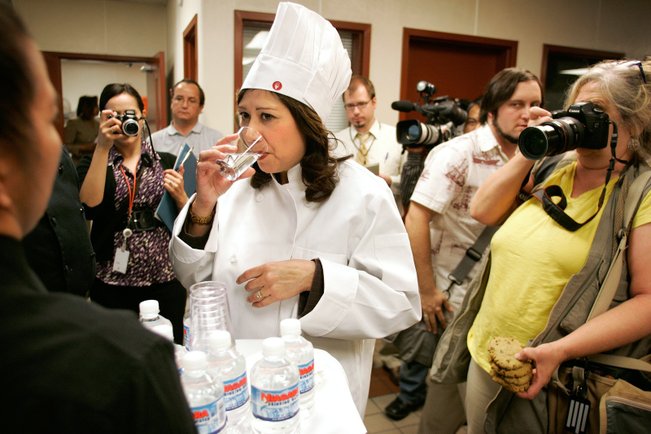The article below from The Statesman.com by Juan Castillo makes good points about the lack of enough OSHA inspectors available to investigate incidents on construction job sites, but surely not enough to make Routine, unannounced work site inspections.
While OSHA officials state that ALL of their inspections are unannounced, that is not wholly true. Incident or complaint calls for inspections are not unannounced, but requested by owners or contractors..
As long as OSHA investigates incidents "after the facts," issues a fairly sizable fine, then has an informal review and cuts the fine amounts down to a slight touch on the wrist, they will never get the attention of the guilty companies. If these sizable fines are upheld OSHA could use fine funds to increase the number of inspectors available. In other words, "Let the guilty parties pay for their shortcomings."
Construction safety crackdown not enough, Austin group says
Construction safety crackdown not enough, Austin group says
An Austin-based workers advocacy group is calling for a permanent increase in the number of federal inspectors who enforce safety standards at construction sites in Texas.
The Workers Defense Project said Monday’s announcement that the Occupational Safety and Health Administration will temporarily increase the number of its inspectors in Texas is “a good first step,” but not enough.
A report released this month by the workers group depicted rampant dangerous conditions in Austin’s commercial and residential construction industry. The study, “Building Austin, Building Injustice,” said that OSHA is ill-equipped to investigate safety violations. It also noted that Texas led the nation with 142 construction-related deaths in 2007.
In announcing the Texas enforcement initiative Monday, the Department of Labor said the state had 67 construction-related deaths in 2008; 33 so far this year.
On June 10, three construction workers died in a scaffolding collapse at a high-rise apartment construction project near the University of Texas. OSHA is investigating.
Citing Department of Labor data, “Building Austin, Building Injustice” said OSHA had a total of 77 inspectors in Texas in 2008, when the state had 10.2 million workers. That represented the fourth worst investigators-to-workforce ratio in the country.
A Department of Labor spokeswoman would not say Monday how many investigators will descend on Texas from other states for the construction industry safety enforcement blitz which begins tomorrow and continues through August. OSHA could decide to increase or repeat the initiative after evaluating results.
“We’re glad to see there is going to be more inspections and hopefully this will prevent a lot of needless deaths,” said Mike Cunningham, executive director of the Texas Building and Construction Trades Council of the AFL-CIO. “Workers should be able to put a day’s work and go home safely every day.”
Workers Defense Project director Cristina Tzintzùn also called for OSHA to conduct more unannounced inspections at construction sites, explaining that workers have said employers often know when inspectors are coming.
A Labor Department spokeswoman, however, said all of OSHA’s inspections at construction sites are unannounced.
Cunningham said that in his 38 years in the business he did not recall OSHA inspecting a site unless it was in response to a death, accident or worker-generated complaint.
 Facebook
Facebook Digg
Digg Reddit
Reddit Newsvine
Newsvine Twitter
Twitter
 Previous Page
Previous Page